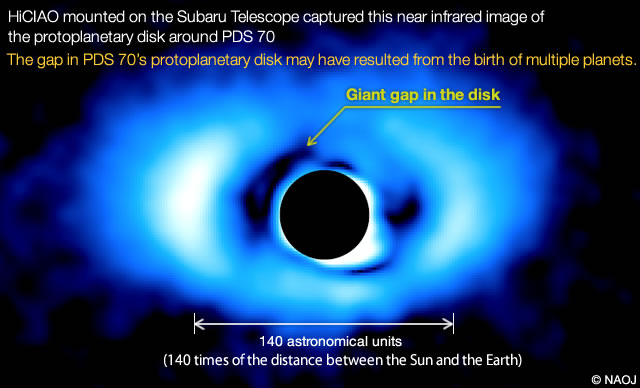Discovery of a Giant Gap in the Disk of a Sun-like Star
| Science
A large international team of astronomers led by Jun Hashimoto (National Astronomical Observatory of Japan) and Ruobing Dong (Princeton University) has used the High Contrast Instrument for the Subaru Next Generation Adaptive Optics (HiCIAO) to observe and examine PDS 70, a young star about 10 million years old with a mass similar to that of the Sun. Images captured from the observations clearly show a giant gap inside the protoplanetary disk, the largest ever found among lower mass stars similar to the Sun. A protoplanetary disk is where planets form, and the gravitational force of newborn planets may account for the huge gap between the inner edge of the disk and the central star. No single planet, regardless of how heavy or efficient it is in its formation, is sufficient to create such a giant gap. The researchers think that the gap in PDS 70's protoplanetary disk may have resulted from the birth of multiple planets. The high contrast images from the observations allowed the researchers to study the details of the disk, which then enabled them to directly reveal the site of formation of one and possibly more planets. The research team is now attempting to detect those planets.
